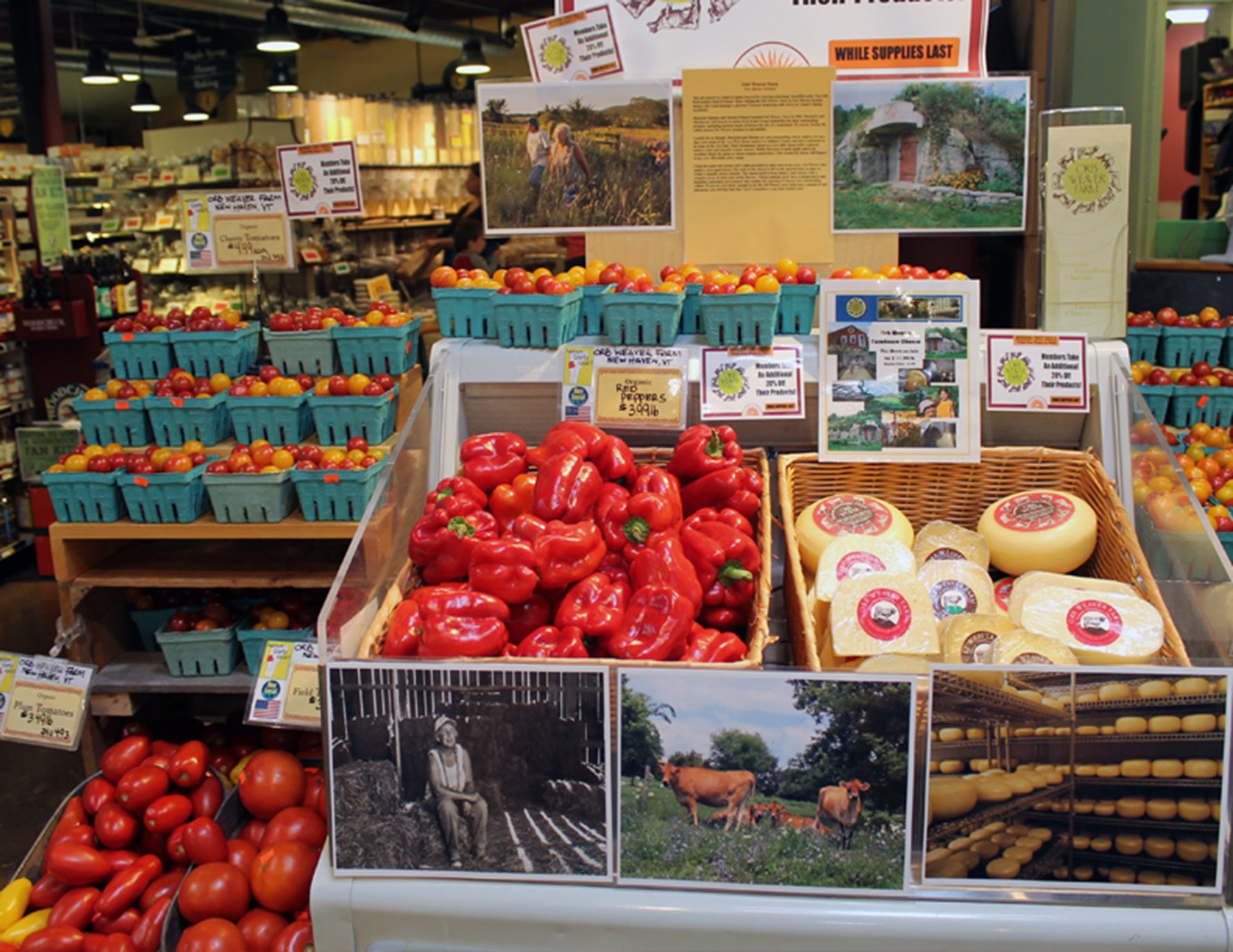Op Ed: Vermont’s food system is critical to our local economy, identity and quality of life
February 13, 2020

By Jake Claro, Farm to Plate Director at the Vermont Sustainable Jobs Fund
I encourage everyone to read through the Vermont Agriculture and Food System Plan recently released by the Vermont Agency of Agriculture, Food and Markets (VAAFM) and the Vermont Sustainable Jobs Fund (VSJF) in fulfillment of Act 83.
The jointly created 2020 plan takes a balanced and honest view of multiple agricultural industries while outlining opportunities for revitalization and stabilization. The plan covers 23 areas of the food system – from products like apples, cheese, goats, grass-fed beef, maple, dairy, and produce, to markets like groceries and schools, and issues such as extreme weather events, water quality, succession, access to capital, and more. In total, over 130 Vermonters, which included the expertise and input of dozens of farmers on what their respective industries need, contributed their time and knowledge to the 23 areas of the 2020 plan. Another 33 briefs currently in development will be released later this year.
Some may be wondering why we need an agriculture and food system plan at this point in time. Despite Vermont’s long history of agricultural production and the recognized strength of our food enterprises, a number of recurring issues, gaps, challenges, and structural problems impact our food system in ways that threaten its vitality and significance to Vermont’s culture and economy. Essentially, Vermont’s agricultural sector is at a critically important inflection point, both in terms of the mix of products we produce for local and regional markets and who the next generation of farmers and food entrepreneurs will be.
As the 2020 plan states, Vermont’s food system is critical to our economy, identity, and quality of life. In turn, it’s important to recognize the ways in which dairy farming is a key foundation to our food system, and the significant economic, ecological, and cultural contributions it has provided to Vermont for over 100 years. Dairy farms account for upwards of 65% of the state’s agricultural product sales ($507.6 million in 2017), even given the five-year dairy pricing crisis and a significant loss of active dairy farms (a loss of 195 farms, or 22.8%, between 2015-2019). A recent analysis found that Vermont’s dairy industry generates $2.2 billion in economic activity annually. Vermont’s 658 cow dairy farms (470 conventional and 188 organic) produce about two thirds of all milk in New England, with the bulk of it processed at 151 plants into fluid milk, cheese, butter, ice cream, yogurt, and powder. These farms manage about 434,000 acres, 36% of all farmland in Vermont. And the farmers and families that manage them are active members of their communities, serving on school boards, volunteer fire departments, hosting community events, and providing access to land for outdoor activities in all seasons.
Equally important to understanding dairy’s contributions overall to Vermont’s food system, is understanding that dairy in Vermont is not a monolith – it is not one thing, conventional or organic, but many things, a complex mix of different sizes of farms, with different production systems, business models, and products. And so, Vermont dairy’s ongoing viability will require a mix of different types of production serving different markets – whether that be conventional, organic, non-gmo-, grass-fed, regenerative, etc. The 2020 plan covers these complexities, in both the dairy and cheese briefs (and also goat dairying in a separate goat brief), and lays out concrete recommendations for achieving this complexity in dairy.
The plan is not only focused on achieving viability for dairy, but many other agricultural industries as well – which in total represent another 35% of Vermont’s agricultural economy ($273.3 million in 2017). For these other industries, there is a great deal of potential and positive consumer trends to capitalize on. But in order for Vermont producers to take advantage of changing consumer trends and a fast-paced, ever-evolving marketplace, our agricultural industry and food system needs long term commitments and support from both the public and private sectors – we need in essence to commit to transitional investments that puts our farmers in a position to viably manage the challenges of 21st century agriculture and food production. The 2020 plan, in understanding the need to transition large parts of our agricultural system away from the vulnerabilities of commodity systems and towards differentiated and value added production, recommends in a thorough and sensible manner the need for additional coordinated investments for high-quality business assistance, marketing support, product research and development, grant programs, regulatory capacity, farmer-to-farmer educational opportunities, infrastructure investments, regional market development, and workforce development.
There are emerging opportunities that could stabilize and revitalize farming in Vermont by taking advantage of changing consumer trends. We need to help our farms and food enterprises survive and to provide access to healthy local food for all Vermonters in the decades ahead. The 2020 plan is the first step in articulating how we can do that, and we hope the beginning of what will be not only be coordinated action but robust dialogue in the state for what we want our food system to be in the next 10 years and beyond.
Lead photo courtesy of Middlebury Natural Foods Co-op.
About the Author: Jake Claro, of Barre, is the Farm to Plate Director at the Vermont Sustainable Jobs Fund. Farm to Plate is Vermont’s statewide food system plan implemented by 350+ member organizations of the Farm to Plate Network to meet the goals of legislation passed in 2009 calling for increased economic development and jobs in the farm and food sector and improved access to healthy local food for all Vermonters. Vermont’s farm to plate food system plan is the most comprehensive in the country and the only state that has complete government engagement. In 2019, Vermont Farm to Plate was reauthorized beyond 2020. Governor Phil Scott signed into law H.275 – an act relating to the Farm-to-Plate Investment Program. The program is managed by the Vermont Sustainable Jobs Fund, a non-profit organization based in Montpelier, Vermont. www.VTFarmtoPlate.com




